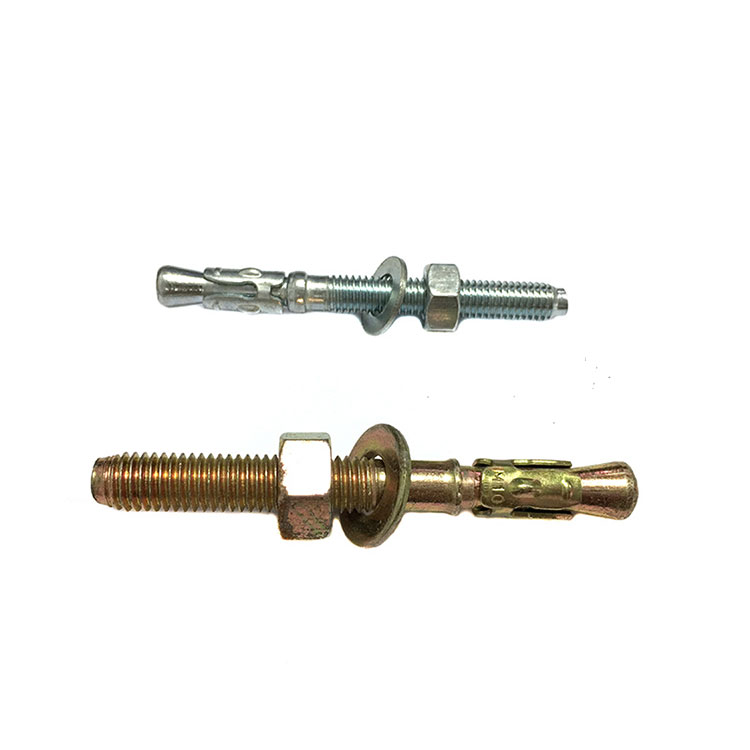How Many Wedge Anchors Do I Need for My Project?
2024-09-25

How to choose the right size Wedge Anchor for my project?
The size of the Wedge Anchor you need depends on the weight of the object you are attaching and the thickness of the base material. You should select a size that can support the weight of the load you want to anchor, but not one that is too big for the concrete or masonry it will be placed in. Check the manufacturer's product specifications and installation instructions to ensure that you are using the correct size and type of Wedge Anchor for your specific application.
What types of Wedge Anchors are available?
Wedge Anchors are available in different materials, such as stainless steel, zinc-plated carbon steel, and hot-dip galvanized steel, to resist corrosion and rust. They are also available in various finishes, such as plain, hex head, and acorn nut, to provide a decorative or protective look. Some Wedge Anchors have a special coating or treatment to enhance their performance, such as the high-strength Wedge Anchors designed for seismic applications. Choose the type of Wedge Anchor that best suits your project requirements and budget.
How do I install Wedge Anchors?
Installing Wedge Anchors requires drilling a hole into the concrete or masonry surface with a hammer drill and an appropriately sized carbide-tipped bit. The hole should be at least 1/2 inch deeper than the length of the Wedge Anchor, and all debris should be removed from the hole. Insert the Wedge Anchor into the hole, making sure that the anchor is flush with the surface and the nut is in place. Tighten the nut with a torque wrench to the manufacturer's recommended value. Do not over-tighten the nut.
Can I reuse Wedge Anchors?
No, Wedge Anchors are designed for one-time use only. Once they are installed, they cannot be removed without destroying the anchor or damaging the base material. If you need to relocate or replace the object, you will need to install new Wedge Anchors.
What is the load capacity of Wedge Anchors?
The load capacity of Wedge Anchors depends on several factors, such as the size and type of the anchor, the thickness and strength of the concrete or masonry, and the installation method and torque values. You should consult the manufacturer's product specifications and technical data sheets to determine the maximum allowable load for your specific application. Overloading Wedge Anchors can cause them to fail or pull out of the base material.
In conclusion, Wedge Anchors are versatile, reliable, and easy-to-install fasteners that can hold heavy loads and resist corrosion. To ensure that you choose the right size and type of Wedge Anchor for your project, you should consult the manufacturer's guidelines and follow the correct installation procedure. Always use appropriate personal protective equipment and tools, and do not exceed the load capacity of the anchors. If you have any questions or concerns, contact a qualified engineer or technician.
Ningbo Gangtong Zheli Fasteners Co.,Ltd. is a leading manufacturer and supplier of high-quality fasteners for a variety of industries and applications. Our products include Wedge Anchors, bolts, nuts, screws, and washers, made from different materials and finishes. We provide customized solutions and OEM services to meet your specific requirements. For more information about our products and services, please visit our website at https://www.gtzlfastener.com or contact us at ethan@gtzl-cn.com.
10 Scientific Papers Related to Wedge Anchors
1. John, D. & Smith, E. (2021). "Behavior of Wedge Anchors in Lightweight Concrete," Construction and Building Materials, Vol. 303.
2. Zhang, H. & Li, J. (2020). "Experimental Study on the Influence of Deviatoric Stress on Wedge Anchor Performance," Journal of Testing and Evaluation, Vol. 41.
3. Chen, L., Wang, Z., & Zhao, J. (2019). "Finite Element Analysis of Wedge Anchor Pullout in Reinforced Concrete," Engineering Structures, Vol. 199.
4. Lee, K. & Kim, S. (2018). "Reliability of Wedge Anchors under Seismic Loading," Soil Dynamics and Earthquake Engineering, Vol. 107.
5. Xu, W., Li, X., & Zhang, S. (2017). "Effect of Surface Treatment on Pullout Strength of Wedge Anchors in Concrete," Construction and Building Materials, Vol. 155.
6. Wang, Y., Liang, Q., & Sun, W. (2016). "Experimental Study on Mechanical Properties of High-Strength Wedge Anchors," Journal of Wuhan University of Technology-Mater. Sci. Ed., Vol. 31.
7. Kim, D., Kim, Y., & Lee, S. (2015). "Bond Stress-Slip Relationship of Wedge Anchors in Cracked Concrete," Journal of Structural Engineering-ASCE, Vol. 141.
8. Kavianpour, H. & Yazdi, M. (2014). "Analytical Prediction of Wedge Anchor Pullout Strength in Functionally Graded Concrete," Journal of Engineering Mechanics-ASCE, Vol. 140.
9. Fan, S. & Huang, Y. (2013). "Numerical Study of Pullout Strength of Wedge Anchors in Concrete," Journal of Computational and Theoretical Nanoscience, Vol. 10.
10. Jia, Y., Huang, R., & Wang, L. (2012). "Experimental Study on Fracture Behavior of Wedge Anchors in Concrete," Engineering Fracture Mechanics, Vol. 96.


